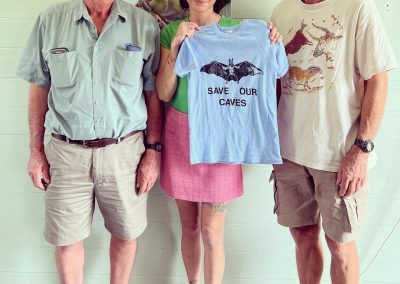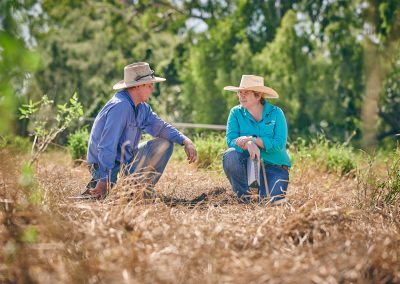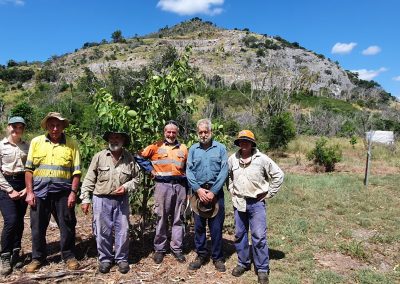Our plan for Land-based Ecosystems
Land-based ecosystems are infinitely complex and we still don’t understand many of the specific requirements of individual plant and animal species, let alone their interconnections and what they will need as weather patterns and habitats change. We have already lost many plant, animal, and insect species due to significant landscape modifications over the past 200 years, and the trend is one of continuing decline. What remains is operating under duress which means the life-supporting ecosystem services we have enjoyed to date are compromised. Our first challenge as a region is to identify, protect, extend and enhance critical habitats to safeguard what remains so we can continue to enjoy clean air and water, naturally pollinated crops and the other important services they provide. Our second, and perhaps most significant challenge, is to build homes, businesses, industries and economies that promote and protect the natural systems in our region.
Key attribute – Terrestrial ecosystems
Goal 1 – The extent, composition, structure and function of terrestrial ecosystems are maintained
- Target 1: Maintain and increase remnant and non-remnant vegetation across the region (measured at the end of the dry season)
- Target 2: ? Extent and condition of critical refugia including ground water dependent ecosystems (climatic, cryptic and other) is maintained and/or increased
- Target 3: The status of listed regional ecosystems (endangered or of concern) is maintained or improved over time (reviewed annually)
Strategies:
| 28. Understand critical elements of habitats and promote and support management practices that conserve these. |
| 29. Understand and address drivers of decline in ecosystem extent and condition. |
| 5. Identify and protect priority species/ecosystems and critical refugia to maintain viable populations and key ecosystem services |
| 33. Increase green spaces in populated areas |
| 30. Promote and support vegetation management practices that conserve biodiversity values and ecosystem function. |
| 31. Promote and support management practices that minimise the impacts of weed and pest species. |
| 32. Promote and support management practices that improve vegetation connectivity at the local and regional scales. |
Achieving this target also benefits these assets and drivers:
Strategies:
| 28. Understand critical elements of habitats and promote and support management practices that conserve these. |
| 29. Understand and address drivers of decline in ecosystem extent and condition. |
| 5. Identify and protect priority species/ecosystems and critical refugia to maintain viable populations and key ecosystem services |
| 30. Promote and support vegetation management practices that conserve biodiversity values and ecosystem function. |
| 31. Promote and support management practices that minimise the impacts of weed and pest species. |
| 15. Understand and prepare for changes in sea level and tidal/storm surges |
| 13. Understand and prepare for changes in sea temperatures, ocean acidity and coastal currents |
Achieving this target also benefits these assets and drivers:
Strategies:
| 28. Understand critical elements of habitats and promote and support management practices that conserve these. |
| 29. Understand and address drivers of decline in ecosystem extent and condition. |
| 5. Identify and protect priority species/ecosystems and critical refugia to maintain viable populations and key ecosystem services |
| 30. Promote and support vegetation management practices that conserve biodiversity values and ecosystem function. |
| 31. Promote and support management practices that minimise the impacts of weed and pest species. |
| 15. Understand and prepare for changes in sea level and tidal/storm surges |
| 13. Understand and prepare for changes in sea temperatures, ocean acidity and coastal currents |
Achieving this target also benefits these assets and drivers:
Goal 2 – Native species (plants and animals) diversity is maintained
- Target 1: No additional species that rely on our region's terrestrial ecosystems are added to the EPBC or NCA lists
- Target 2: Trajectory of known listed threatened species that rely on our region's terrestrial ecosystems is stable or improved
Strategies:
| 28. Understand critical elements of habitats and promote and support management practices that conserve these. |
| 5. Identify and protect priority species/ecosystems and critical refugia to maintain viable populations and key ecosystem services |
| 30. Promote and support vegetation management practices that conserve biodiversity values and ecosystem function. |
| 31. Promote and support management practices that minimise the impacts of weed and pest species. |
| 33. Increase green spaces in populated areas |
| 15. Understand and prepare for changes in sea level and tidal/storm surges |
| 13. Understand and prepare for changes in sea temperatures, ocean acidity and coastal currents |
Achieving this target also benefits these assets and drivers:
Strategy:
| 28. Understand critical elements of habitats and promote and support management practices that conserve these. |
| 5. Identify and protect priority species/ecosystems and critical refugia to maintain viable populations and key ecosystem services |
| 30. Promote and support vegetation management practices that conserve biodiversity values and ecosystem function. |
| 31. Promote and support management practices that minimise the impacts of weed and pest species. |
| 33. Increase green spaces in populated areas |
| 15. Understand and prepare for changes in sea level and tidal/storm surges |
| 13. Understand and prepare for changes in sea temperatures, ocean acidity and coastal currents |
Achieving this target also benefits these assets and drivers:
Key attribute – Terrestrial landscape patterns (corridors)
Goal 3 – Habitat connectivity is managed to sustain natural values
Strategies:
| 28. Understand critical elements of habitats and promote and support management practices that conserve these. |
| 5. Identify and protect priority species/ecosystems and critical refugia to maintain viable populations and key ecosystem services |
| 30. Promote and support vegetation management practices that conserve biodiversity values and ecosystem function. |
| 31. Promote and support management practices that minimise the impacts of weed and pest species. |
| 26. Build knowledge and awareness about end-of-dry season groundcover/biomass standards by land type. |
Achieving this target also benefits these assets and drivers:
On-ground Action

Gladstone Region Economic Transition Roadmap 2022-2032

Protecting Biodiversity since ’73!: Capricorn Conservation Council

Bringing Nature back to Frenchmans Creek, Rockhampton: CQUniversity

Fitzroy Basin Association: Australian Government Funded Projects
